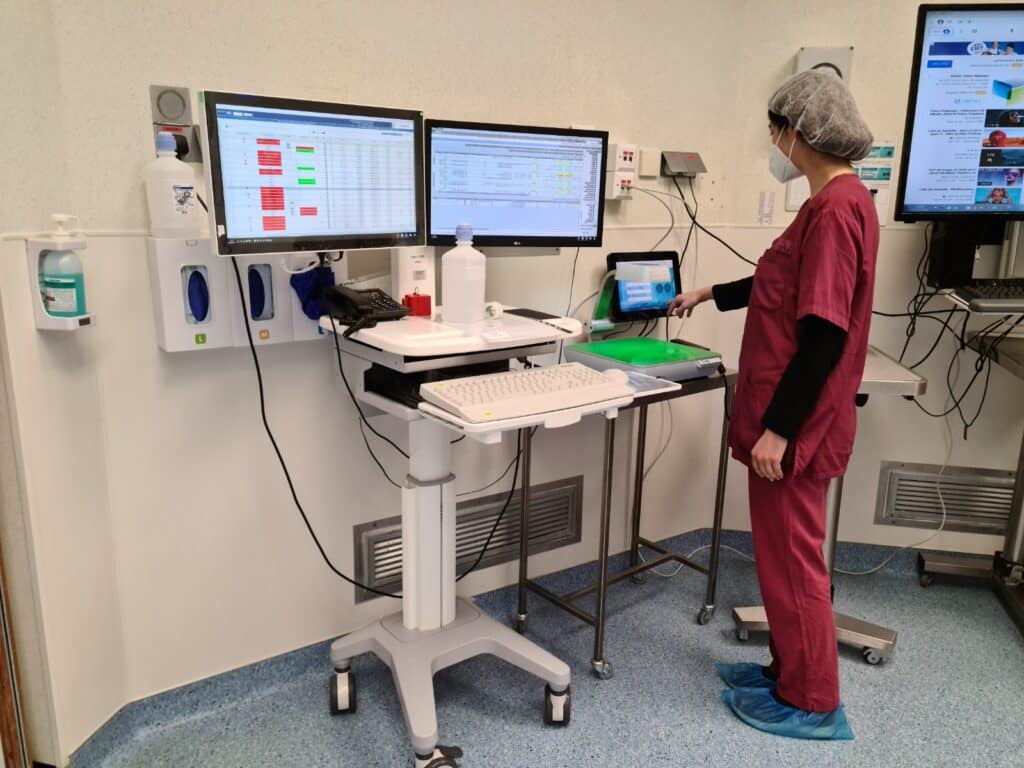What’s inside:
Modern healthcare management, and in particular OR management, is under continual pressure to improve the quality of care, while reducing costs.
We look at:
- Barriers to surgical supply chain efficiency in OR
- Addressing OR supply chain challenges as a key driver for improved OR efficiency.
- How product substitutions, PPI standardization and surgical packs can support OR supply cost reductions.
- Leveraging OR inventory data to improve healthcare efficiency and the quality of care.
So let’s look how to improve inventory management in the OR.
Overcoming supply challenges and driving efficiency.
Healthcare management today relies upon good business processes that minimize costs and optimize revenue.
One of the highest expenditure areas of any healthcare provider is medical and surgical inventory. Healthcare organizations are continuously looking for ways to reduce costs, boost efficiency and improve patient care by adding value and efficiency to the management of the healthcare supply chain.
Materials management in the operating room is particularly tricky to manage due to the complexity of the setting. Despite this, there are many ways to improve operating room supply management.
The challenges of inventory management in the OR
The OR setting is known to have many challenges that contribute to supply chain and OR inefficiency:
Wasted products: Nurses are responsible for managing surgical inventory in the OR but lack the time to keep on top of tasks such as expiry management. Consequently, healthcare providers regularly report 5-10% wastage of their OR stock due to expired items.
Physician preferences: Many physician preference cards (PPI) are out of date and if non-reusable, high-value medical devices, implants or consumables are opened but not used, it ends up being an expensive mistake and creates yet more unnecessary wastage. Another implication of outdated physician preference cards is that nurses often end up running around to find alternative products while the surgery is taking place – causing a delay in the procedure and resulting in prolonged anesthesia times – which is a patient safety risk.
Lack of standardization: OR supply costs can be kept artificially high due to product variance. This may be an inventory management issue or a PPI issue. Where a variety of interchangeable products are procured there is often room to investigate standardization and significantly reduce costs.
Unpredictable demand: There is a tendence to over-order surgical inventory due to insecurity around supply chain disruption and levels of demand. It’s hard to predict which items will be used, in which sizes and quantities, so it’s common to see surpluses in OR inventory. Another way of dealing with this issue is to rely on last-minute orders and bill-only products – which can be expensive and result in documentation issues.
Documentation difficulties: Busy nurses and inadequate systems can make point of care product usage documentation an inefficient task. This vital supply chain data is required for clinical, operational and financial efficiency, so providers need to find a way to achieve full data integrity in the operating room, plus system interoperability.
Operating Room supply management is complex and rife with inefficiencies. Hospitals, ambulatory surgery centers and health systems have recently been prioritizing operating room inventory management as an area that has the potential to be run much more efficiently and cost-effectively.
Documenting ‘tricky’ products such as trunk stock that may not be preloaded into the system, can be eased by using the right automated tool.

Explore product substitutions when preferred products are unavailable
Supply chain disruptions have presented many challenges to healthcare materials management over the last few years, but they have also triggered many improvements that have resulted in added efficiencies, reduced wastage and costs.
Materials management teams can add cost-efficiency to their procurement by streamlining providers and standardizing products. However, when it comes to physician preferred items (PPI), it’s the physicians that drive the process. When preferred products are not available, physicians will need to evaluate the alternatives and work with materials management to find comparable product substitutions.
This process can actually be enlightening, with physicians finding alternative products that are just as effective as their original preference items but are cheaper and easier to obtain.
The necessity to review PPI has led to greater integration of clinical and operational functions and forums such as value-added committees have been beneficial for all parties. Including physicians in supply chain conversations can get them on board with revising PPI and reducing OR supply chain costs.
Leverage data to make smarter decisions
OR data is the driving force of efficient supply chain management. New automated OR inventory management tools are now providing metrics, reports and data insights that are improving OR efficiency due to enhanced stock control, inventory management and demand forecasting.
There are two ways that OR data improves healthcare efficiency:
Improving inventory management
Data-driven decision-making can result in:
- Full inventory vision
- A reduced inventory
- Improved expiry management
- Demand-led procurement
- An end to surpluses and stockouts
- Product standardization
- Streamlined workflows
- Reduced supply chain labor
Data is vital for effective stock control and informed procurement. Automated systems reduce the time and effort spent on supply chain management, freeing up clinical staff to focus on patients.
Improving operational efficiency
Improving inventory management in the OR by adding automated tools can:
- Reduced wastage
- Reduced costs
- Enhanced patient safety and recall management
- Improved charge capture and revenue
- Improved contractual arrangements
- Informed decision making based accurate stock and consumption data
Leveraging OR supply chain data improves the efficiency of healthcare operations and organizational performance. Advanced systems can also provide shared, real-time hospital inventory vision between supply chain partners, adding the trust and transparency that supports leaner, more resilient, supply chain management.
Use surgical packs to deliver care with efficiency and accuracy
One method of dealing with supply shortages is to look into purchasing pre-sterilized surgical packs, where all items for a specific surgery are included in one pack that is delivered to the OR.
This method requires a close working relationship with the distributor and can include ongoing revisions to the pack based upon improvements and cost saving opportunities.
This way of working reduces picking errors by providing custom packs.
Custom procedure trays require all physicians carrying out the same procedure to agree on standardized items. In effect every procedure would have its own PPI rather than every physician.
Be flexible to achieve more effective operating room inventory management
OR management now relies upon close working relationships between management, clinicians, and operational teams, such as materials management, revenue cycle management and billing.
Healthcare has become more integrated, and data is the glue that is forging greater connectivity between all parties.
Using technology can significantly improve inventory management in the OR.
Discover data-driven OR management. Find out about automated OR inventory management solutions

IDENTI Medical is a specialist in operating room supply chain solutions that provide real-time stock visibility, full consumption data and meaningful analytics that support enhanced OR management.
If you want to improve data integrity in the OR let’s talk.






